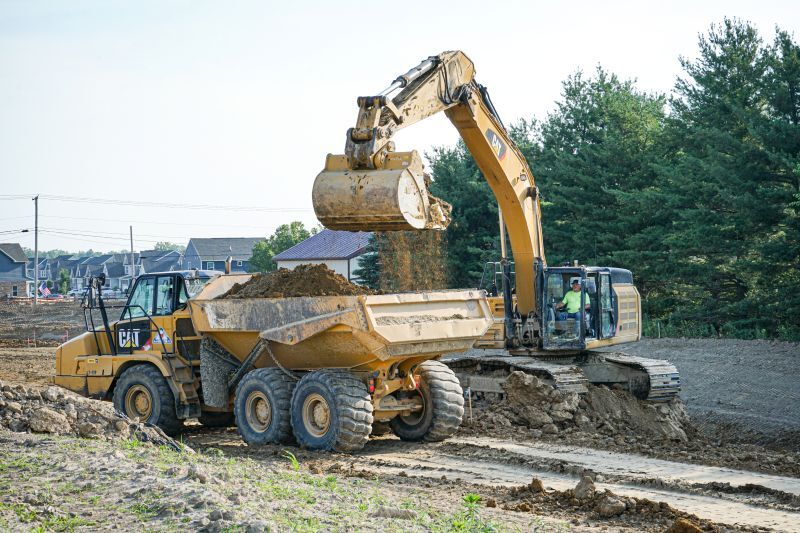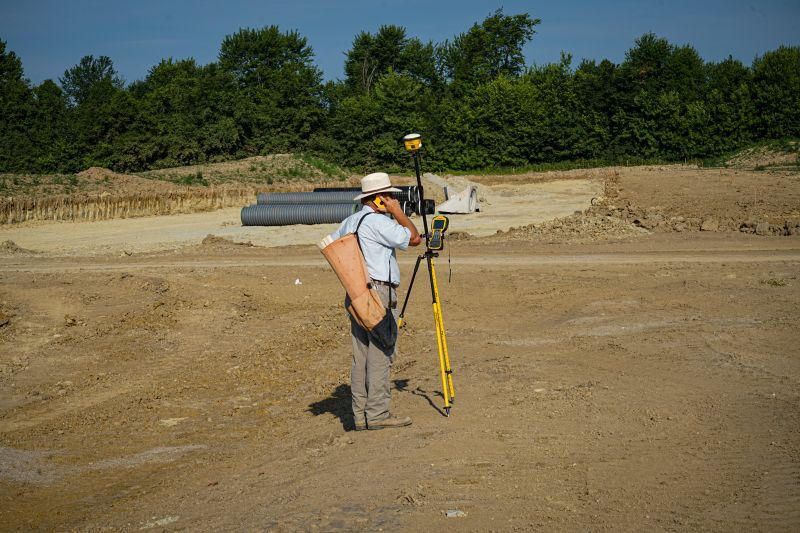How Mass Excavation Shapes the Success of Every Site
.jpg)
You’ve seen it happen: you’ve got a clean set of plans and a confident schedule, but then the ground tells a different story. Mass excavation is where that story usually starts. This is where budgets, schedules, and site design meet reality. When the soil shifts, so do the numbers.
Developers and contractors know the feeling. A bid looks complete, the numbers seem right, and the schedule feels realistic. Then the soil turns out heavier than expected, water starts collecting, or trucks sit waiting while grades are rechecked. And every delay has a price.
Understanding what mass excavation truly involves helps prevent these situations. It is not about how much dirt to move, but how to move it efficiently, safely, and in sync with the design. With the right process, the ground becomes predictable, the plan holds steady, and every dollar spent supports progress instead of recovery. Let’s take a look at what separates a smooth excavation from one that slows a project before it starts.

See the Whole Picture Before the First Cut
Every jobsite has surprises. What makes the difference is how well you can see them coming. Before the first dozer starts pushing dirt, a good excavation team looks at the entire site and asks: how do we move this efficiently, safely, and without creating extra work later?
The answer starts with visibility and balance. Crews clear the land to expose the natural grade, then use cut and fill to even it out. Dirt from high points is shifted to low areas. Using what’s already on site saves fuel, time, and a lot of unnecessary hauling. That balance keeps trucks running steady and production on pace.
Once the grades are set, the crew compacts each layer of soil. Each pass adds strength and stability for the work that follows. At the same time, groundwater control stays front and center. Trenches, pumps, and drainage systems keep the site dry and safe so crews can keep working, even when rain shows up at the worst time.
Teams that plan ahead in this phase do more than move dirt: they keep the whole job running on schedule.
Plan Like the Ground Is Already Talking
The ground always gives clues. Good teams pay attention before they start digging. Planning with up-to-date data prevents bad assumptions from turning into lost time.
Before equipment ever shows up, we double-check surveys, test borings, and soil reports. That information keeps everyone honest about what’s really underfoot. It’s the difference between guessing and knowing.
[H3] Use Real Data, Not Assumptions
A drawing can’t tell you how wet the subgrade will be, but a current soil test can. Topo updates and borings show how each material type will react once it is moved and compacted. Accurate data gives developers and site work contractors a shared set of facts that keep the budget realistic and the work steady.
Do the Math Before the Mud
Soil behaves differently once it’s disturbed. Clay expands, granular fill settles, and both affect haul counts and compaction rates. Planning for those changes is faster and cheaper on paper than in the field.
Haul routes matter just as much. Short, direct loops cut idle time and fuel costs. Long, winding hauls eat the day before anyone notices. When everyone understands the math early, production stays predictable and crews stay productive.
Good data and a plan that respects it turn guesswork into control.

Put Technology to Work Where It Counts
Technology has reshaped how excavation runs day to day. The right tools amplify experience and turn skilled judgment into faster, more consistent results.
Let 3D Modeling Guide Every Move
Digital modeling connects the office plan to the operator’s screen. Every cut, fill, and pass is compared in real time to the design surface. That accuracy means less staking, fewer grade checks, and almost no rework. When the operator can see the plan, earthmoving becomes precise work instead of guesswork.
Coordinate Utilities Before the First Bucket Drops
Excavation and utilities can’t fight for the same space. Checking routes, elevations, and tie-ins early keeps everyone out of each other’s way once the work starts. Early coordination saves days of rework and a lot of frustration in the field.
The right technology delivers results you can measure in speed, accuracy, and consistency. It keeps production steady and lets the crew focus on quality work.
Protect the Site and Stay in Compliance
A jobsite runs smoother when it stays safe, clean, and compliant. Managing groundwater, slope stability, and erosion is not just about meeting regulations; it’s about keeping the project moving without shutdowns.
At Charles H. Hamilton, we build environmental controls into every project from the start. Our land clearing contractors and field teams log groundwater levels, maintain erosion controls, and document each inspection. Those records keep projects compliant and give inspectors confidence in the work.
The goal is a site that’s productive, responsible, and ready for whatever comes next.

Straight Answers from the Field
Even experienced teams run into questions about scope, timing, and cost once excavation begins. These are a few of the questions that come up most often.
How can I budget export and import with accuracy?
Start with current surveys and soil tests. Include shrink and swell factors in your takeoff, and plan haul routes early. Working with earthwork contractors who track quantities as conditions change keeps the numbers accurate and the surprises small.
Which drives cost more: haul distance, dewatering, or rock?
Each site is different, but long hauls and groundwater control tend to be the biggest variables. Testing early and setting realistic expectations saves more money than any quick fix later.
How does machine control reduce survey expenses?
Automated grade systems cut down on manual checks and field staking. Operators see exactly where they stand, which reduces rework and speeds up every phase of site development.
Start Excavation Right with Charles H. Hamilton
At Charles H. Hamilton, we treat excavation as the point where planning turns into progress. Our sitework crews handle every phase of earthworks, including land clearing, lot clearing services, grading, and utilities, with skill built on decades of experience.
We plan with care, work with precision, and build with pride. Each job begins with clear data, well-maintained equipment, and a team that knows how to keep production consistent.
Ready to move forward with confidence? Contact us to schedule your preconstruction estimate and consultation. Our team will help you plan excavation with precision and keep your project on solid ground.

